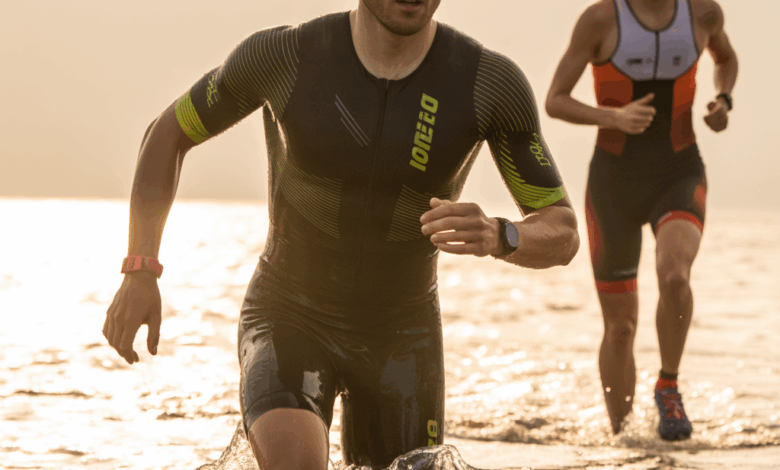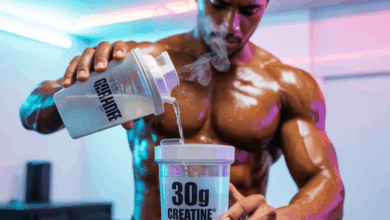Triathlon Neoprene Suit: Choose, Train & Perform Better in Open Water

Have you ever tensed up at the edge of an open-water start, wondering whether your suit will keep you warm, buoyant, and fast — or slow you down? Whether you’re lining up for your first sprint triathlon or chasing a new personal best in an Olympic-distance race, the right triathlon neoprene suit can make a huge difference to confidence and performance.
Why a Triathlon Neoprene Suit Matters
A triathlon neoprene suit (often called a triathlon wetsuit or open water swim wetsuit) does three important jobs: it insulates against cold water, provides buoyancy to improve body position, and reduces drag with a smooth outer surface. For new triathletes and seasoned racers alike, selecting the right wetsuit can shave minutes off your swim split and conserve energy for the bike and run.
How to Choose the Right Neoprene Suit for Triathlon
Fit and Flexibility
Fit is king. A triathlon neoprene suit should be snug but not restrictive — you want minimal water flushing (cold water moving through the suit) and full range of motion for your shoulders. Look for suits labeled as “triathlon” or “open water” that prioritize shoulder flexibility over pure thermal thickness.
Neoprene Thickness & Buoyancy
Thickness is usually measured in millimeters (e.g., 1.5mm, 3mm, 5mm). Thicker panels on the legs and core increase buoyancy and reduce drag, but too much thickness in the arms can impede your stroke. Many triathlon wetsuits use variable thickness: thicker around the hips and thighs, thinner in the shoulders.
Entry Style & Ease of Removal
During a race, transitioning out of your wetsuit quickly is essential. Look for features like long, easy-pull zippers, ankle and wrist cut lines designed for stripping, and smooth knee panels. Practice doffing before race day to shave seconds off your transition time.
Practical Tips for Training with a Neoprene Suit
Wearing a wetsuit changes your balance and stroke slightly. These training tips will help you adapt and maximize the suit’s benefits.
- Open-water sessions: Practice sighting, drafting, and rolling with the suit on. Simulate race starts and crowded conditions so the suit feels second nature.
- Pool drills: Use paddles and kickboards to isolate stroke mechanics, then swap to suit sessions to focus on body position improved by buoyancy.
- Brick workouts: Bike-run bricks are essential. Do some bricks with a wetsuit warm-up so your cardio and muscular systems are accustomed to the feel of swimming fast then transitioning.
- Core & mobility: Strengthen your core and improve thoracic mobility to maintain a streamlined position in the suit. Include planks, dead bugs, and thoracic rotations twice a week.
Sample Workouts: Swim & Brick Variations
Open-Water Swim Session (60 minutes)
- Warm-up: 10–15 minutes easy swimming, sighting every 6–8 strokes.
- Main set: 6 x 400m at race pace with 60–90 seconds rest — practice drafting and buoys.
- Race simulation: 3 x 100m fast starts (simulate sprint from a pack), focus on clean entries and quick breathing.
- Cool-down: 5–10 minutes easy swim.
Brick Workout (90 minutes)
- Swim: 20 minutes steady with neoprene suit for warm-up.
- Bike: 45 minutes with 6 x 2-minute high-cadence efforts.
- Run: 20 minutes immediately after bike — start easy and build pace to feel comfortable running off the bike.
Real-World Examples
Take Emma, a beginner who raced her first Olympic-distance triathlon in chilly open water. She chose a 3/2mm triathlon wetsuit that boosted her hips and improved body position. After practicing a few open-water sessions and transition drills, she cut her swim time by 7 minutes and felt fresher on the bike.
Or John, an age-group competitor who swaps between a high-end full-sleeve neoprene suit for colder events and a sleeveless tri-suit for warmer races. He keeps both options in his race kit and checks water temperature and rules before choosing — a smart strategy for consistent performance.
Healthy Lifestyle Habits to Complement Your Wetsuit Training
- Nutrition: Eat balanced meals with carbs, protein, and healthy fats. Pre-race, stick to familiar foods that fuel fast digestion and steady energy — see our nutrition guides for meal plans.
- Hydration: Cold water can blunt thirst cues; track fluids and salt intake during long training blocks.
- Sleep & recovery: Aim for 7–9 hours of quality sleep. Include active recovery and foam rolling to prevent stiffness from tight neoprene panels.
- Injury prevention: Rotate training intensity, cross-train with swimming-focused strength work, and address shoulder mobility to reduce overuse injuries.
Care & Maintenance of Your Neoprene Suit
Rinse your triathlon neoprene suit in fresh water immediately after use, unzip it and hang it to dry away from direct sunlight. Avoid harsh detergents and heat. Store it flat or on a wide hanger to prevent creasing. Regular care extends the suit’s life and maintains its buoyancy and flexibility.
Frequently Asked Questions
1. Do I need a neoprene suit for short triathlon distances?
If the swim is in cold open water or if you want added buoyancy and confidence, a neoprene suit is useful even for sprint distances. Check race rules and water temperature guidelines, and practice in the suit before race day.
2. How tight should a triathlon wetsuit fit?
The suit should be snug with minimal wrinkles but not so tight that it restricts breathing or shoulder movement. You should be able to take a deep breath without impeding your stroke. Try on suits in motion if possible, or buy from retailers with flexible return policies.
3. Can I train in a neoprene suit in the pool?
Yes — training in a neoprene suit in the pool is a great way to test fit and practice technique. However, chlorine can degrade neoprene over time, so rinse thoroughly and limit pool-only use if you want to preserve the suit.
Conclusion — Make Your Triathlon Neoprene Suit Work for You
Choosing the right triathlon neoprene suit and training smart with it can transform your open-water performance. Focus on fit, flexibility, and race-specific practice; combine this with solid nutrition, recovery, and swim-bike-run bricks to get the most from your investment. Ready to improve your swim and shave time off your race? Start by testing suit fit in a safe open-water session, then incorporate the workouts above into your training plan.
Want more structured practice? Check out our workout routines and don’t forget daily wellness tips to keep your training consistent and injury-free. Get out there, practice, and make your next race your best yet.





